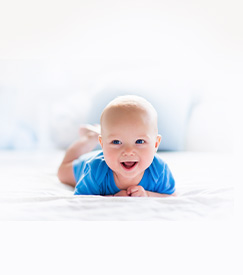
Children who are raised by their birth parents are surrounded by their history. Adoptees often experience gaps in time and memories no matter their age at the time of adoption. While open adoptions are becoming more common, not all adoptees have access to their birth parents, and without proper documentation of their life story, adoptees are left wondering about their own history which may lead to them having a very fragile sense of who they are.
Life story books are memory books that help ensure adoptees have greater access to their own story, which plays an important role in their overall emotional and mental wellbeing.
What is a Life Story Book?
Life story books are intended to help the children understand adoption and minimize the risk of them losing memories that may be important to them, such as their birth story and birth family. Photos, descriptions of events and people, and documents are examples of what may be included in the book.
Life story books may be created by adoptive parents, birth parents, social workers, or any combination of people invested in the adoption process of the child. Typically, the book will start at birth and move chronologically through the childs life, similar to a baby book for other children. The main difference is that an adoptees life story book will often contain information about their adoption process, such as meeting for the first time. If a child was in foster care, then the book may contain information about their foster family or other caregivers, in addition to their birth family.
Benefits of Life Story Books
When created well, life story books play a powerfully beneficial role in an adoptees life. Some of the benefits of a properly crafted life story book include:
- helping children understand adoption
- providing adoptees access to their birth story
- minimizing the risk of adoptees forgetting information and losing memories
- increasing a childs self esteem and self worth
Best Practices When Creating a Life Story Book
In a study of adoptive families with life story books, those who liked the book the most, felt that the story was age appropriate, honest, and told the story well. When writing in the life story book, consider questions the adoptee might want to have answered, such as who am I? why am I here?.
Dont just include photos and a few sentences providing dates, places, and names. Make the life story an account of the childs history. It is often best to start with the present, and then touch on the childs history and birth story. This helps them feel more secure with their adoptive family.
Some things to consider including in the life story book:
- family tree
- photos of birth parents and birth relatives
- birth parents stories
- photos from maternity hospital
- weight and length at birth
- items from the hospital, such as the identity tag
- dates of milestones, such as first words or tooth
- photos and maps of places the child lived, without physical addresses
- photos of friends
- photos of any workers that were apart of their adoption process
- story of family finding
- story of court process
- favorites (e.g. foods, animals, toys, etc)
Remember that the book should be appropriate for a child, since they are used by adoptees at a young age. There are resources online that help people design lifebooks online so that it can be made to look appealing and enjoyable.






